Running Volcanic 50k – Race around Mt St Helens
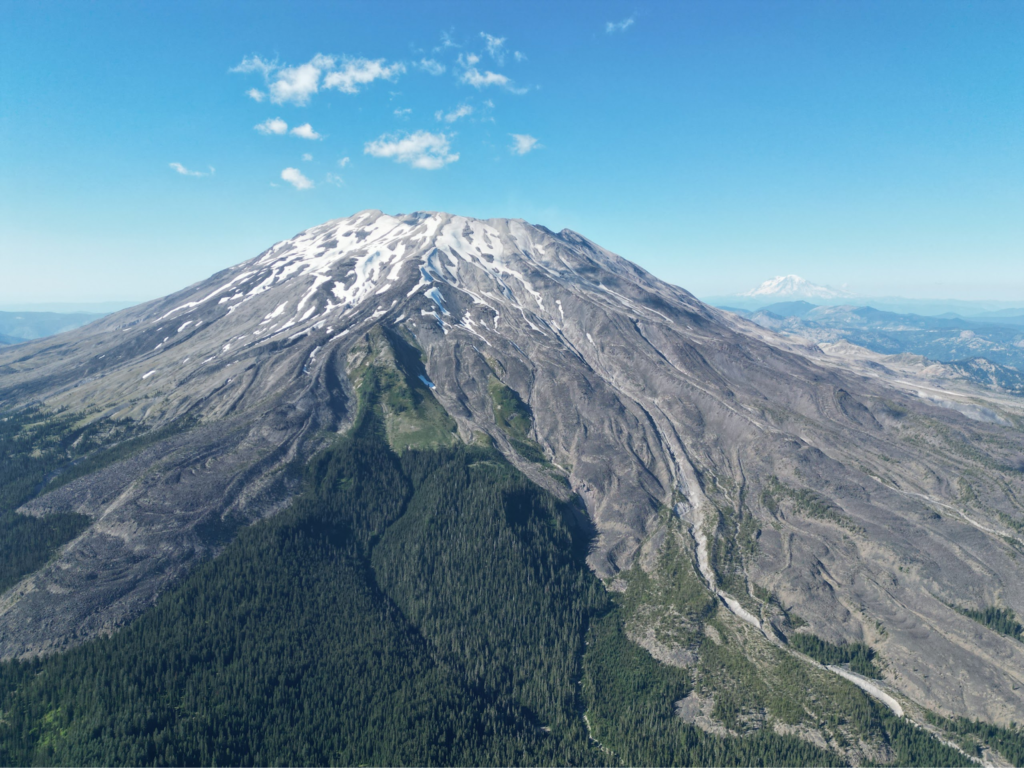
I wanted to run the Volcanic 50 race ever since I accidentally ended up running the 25K course last year – the course was gorgeous going part way around the volcano through boulder fields and forest trails, yet it did not quite provide you with a full 50k course experience which goes all the way around Mount St Helens including the blast zone from 1980 Eruption.

You can see the 50K race on the different levels immediately – you need to have experience finishing other 50K trail races or Volcanic 25K to enter. It also has a bunch of mandatory race gear you need to carry. Unlike 25K last year, which had a lot of people who seemed to have run technical 25K for the first time, the 50K competitive field was much more solid, consisting mostly of experienced trail runners.
I was hiking a fair amount of days before so I was not looking to break any records – rather my goal was to enjoy the race, finish strong, and avoid injuries, which are easy to get on such terrain.
The race was mostly following Loowit Trail which is considered a challenging hiking trail you would hike in 3-4 days, which makes it especially fun. The trail goes high enough in the mountain so it does not cross any access roads and in particular because one of the main access roads was closed this year due to landslides, you would need to hike more than 10km from the Aid station in some cases if you decide you do not want to continue the rail.
Going into the race I expected it to be very hot, it was about 30C and sunny a couple of days before the race, which is unusually warm for the area. During the race day though, we got clouds and even some rain overnight, just in the right amount to get a little bit of cool but avoid trails getting super muddy.
With the race starting at Marble Mountain Sno Park many racers just camp there overnight. I chose to stay in Woodland, WA instead which is around 1h away.
Note on Navigation: While Google Maps navigation worked fine, the Tesla Navigation tried to route through non-existent forest roads, while pretending the actual highways do not exist. If I would not remember the road from last year I could have missed the race.
In a race like this I like running with Poles – Not so much for power but for stability – 4 points of contact is better than 2 on slippery rocks, especially with tired legs.
While not having many rest days before the race I felt well recovered. I slept well before the race and had a good breakfast some 3h before the start as well as got at least a liter of liquids to hydrate well before the race. For the race, I had around 1.5l of Nuun for hydration and a variety of snacks – gels, waffles, chewables – on such a long race variety is important for me.
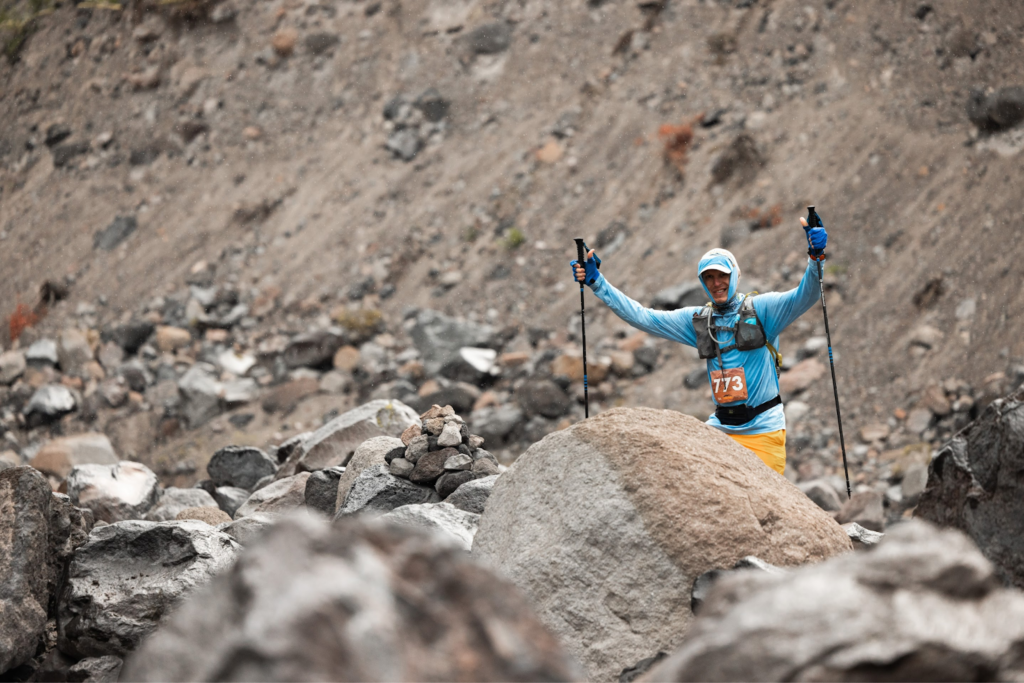
Sometimes I like to listen to music or Podcasts during the long race, but not this time – I ended up mostly focusing on enjoying nature and just looking at where I placed my feet.
The danger of not properly hydrating during a long race is pretty real – when you feel thirsty it is too late, so I try to drink on the que – 1km lap beeps from my Garmin watch. 3 sips every time looked like enough, though going through some 3L during the race, it is a lot less compared to some 6L Garmin’s “estimated sweat loss”. Will need to correct to drink more next time.
I also found my Hydrapak Elite bladder super light and convenient to operate during the run can get stuck from the pressure and is very hard to open on the Aid station – Perhaps will try a different design for the next race or might be front flasks that are easier to access.
Feeding – I eat one of the snacks every 3km plus got some extra snacks at aid stations (typically a couple of pickles) which was maybe 2000 calories in all. Garmin estimates I should have lost some 5,000 calories during this race. Not bad but eating more probably would be good – I felt I was out of my Glycogen supplies and my body resorted to burning fat instead.
The pacing was good. I tend to start fast, trying to keep up with all those mountain goats at the start, and run the risk of eventually running out of energy and going very slowly. With my coaches from Nox we agreed on trying to stay within 155 bpm while going uphill. I stuck to this goal even if it meant walking on a lot of steep elevations and this meant I was moving reasonably well by the end of the race and even caught up with a few completely exhausted racers during the last 10k.
A couple more notes on equipment. You can see on the pics I’m wearing gloves and Buff in a funny way around my hat. This is for the sake of sun protection – the sun is brutal high up, even if it is cloudy and I know I will find it hard to reapply sunscreen several times during this long and sweaty race, so instead I try to rely on cloth protection when possible.

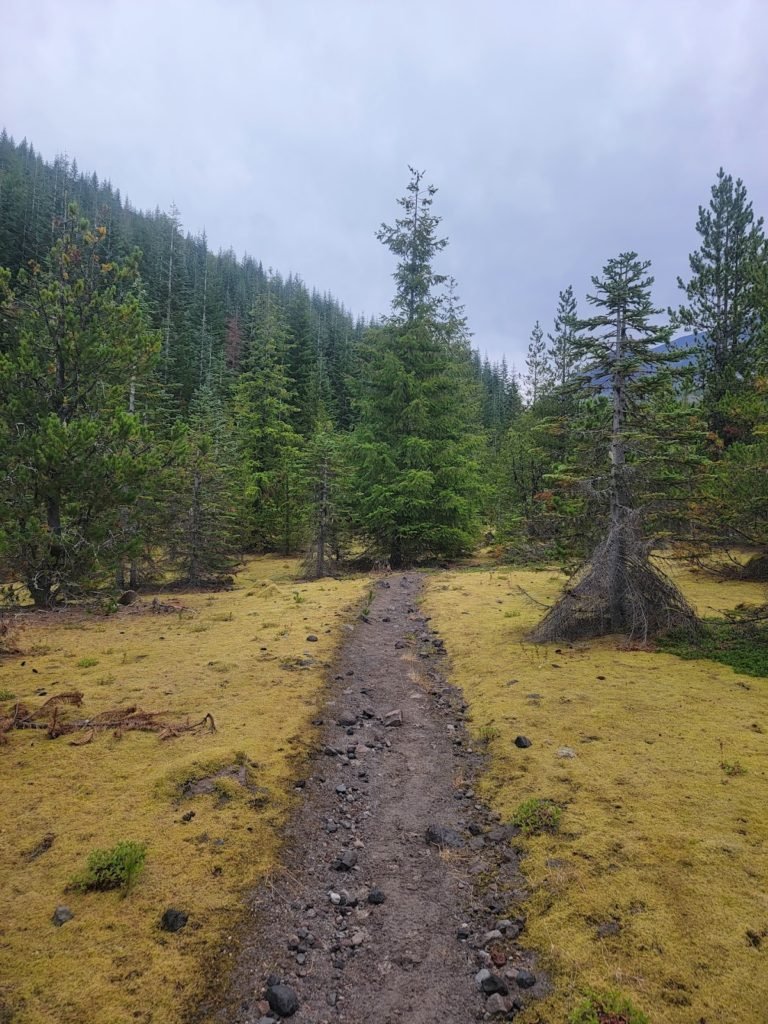
Running shoes are important for technical runs in particular – both in terms of grip as well as development of the blisters. I used my La Sportiva Bushido II trail running shoes which I love for this kind of terrain – they have fantastic grip and fit the foot snugly. I developed the hot spot under the toes but no blisters or lost toenails which is great for the 8h+ race. I also used gaiters which I think is must have on the trails with lots of small loose rocks if you do not want to spend a lot of time cleaning them from your shoes.
Most of the race took at around 1500m (5000ft) altitude, first part of the race was on the colder side with rain and pretty cold winds, though not cold enough to require getting a raincoat from the backpack. Second half of the race sun managed to come out and it was hot, though not too bad.
Race went through several boulder fields, and many deep ravines, some of which had ropes set for ascent and descend, creek crossing as well as forest and meadows. We even have a small patch of snow to run on ?
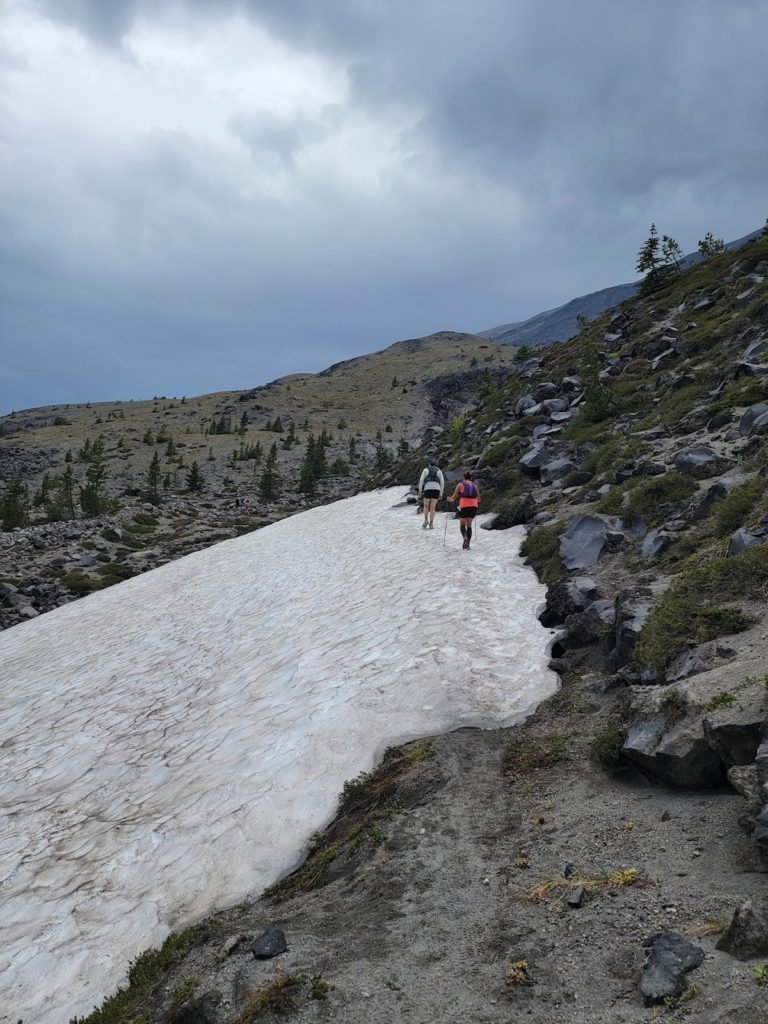
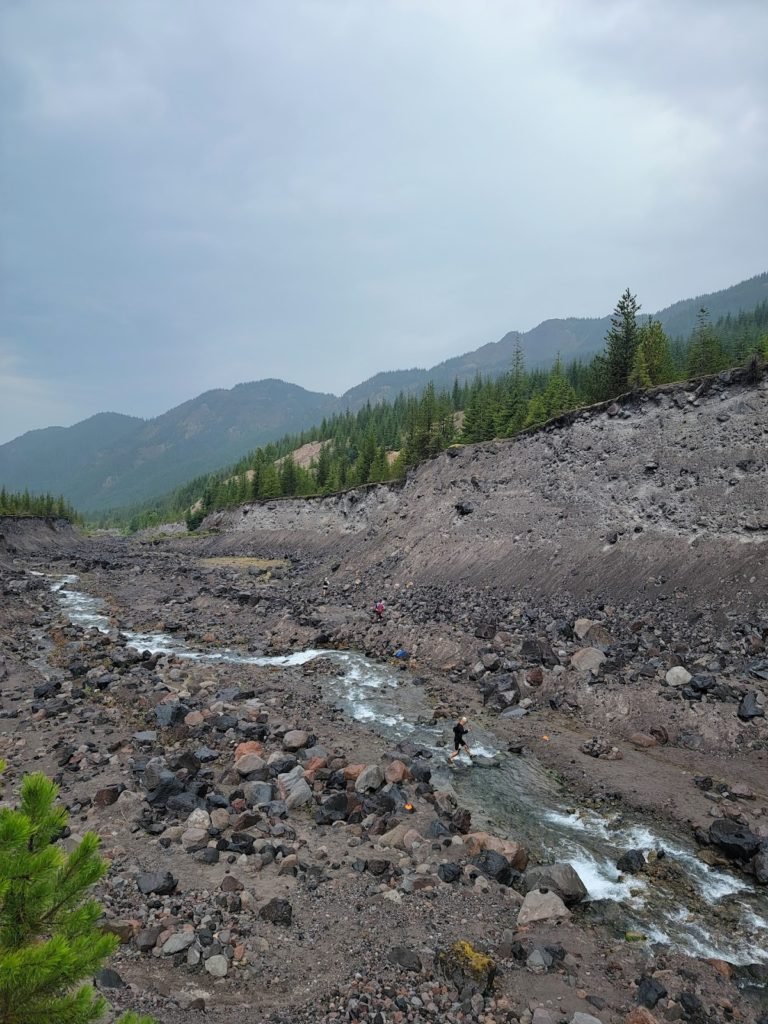
I ended up Finishing in 8h 40min – well within the 8h-10h range I estimated for myself. It was not an easy race but I’m glad it was not the question ever during the race, whenever I can finish it, but rather how fast.
If you’re doing mostly flat road races you may be surprised it takes so long to do 50K. It looks like a pace of brisk walking rather than running. There are three things to keep in mind. The first, distances stated in such trail races tend to be approximate – my GPS clocked around 54K. Second, there is an elevation gain of some 2400m (8000ft) and third technical terrain makes moving slower. In all, the best result of the year was 5h:16m.
The next Ultra Trail run for me will be Run the Rut 50K in Montana – excited to see how that race compares!


[…] Volcanic 50 is a Race going around Mt. St. Helens – Volcano in Washington which had a massive eruption in 1980 that blew off half the mountain. I did a 25k race a year before and was excited to finally do a full run around the mountain. More details are in this blog post. […]